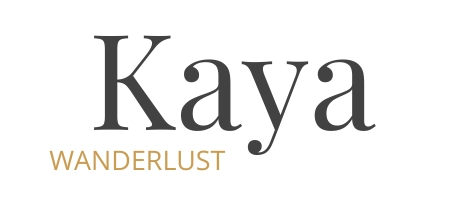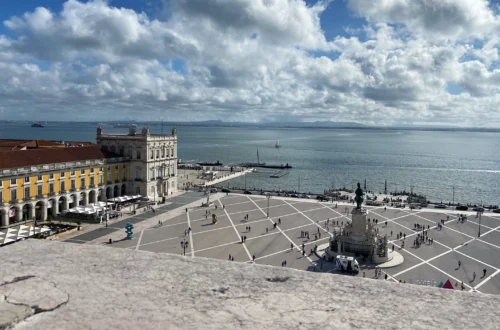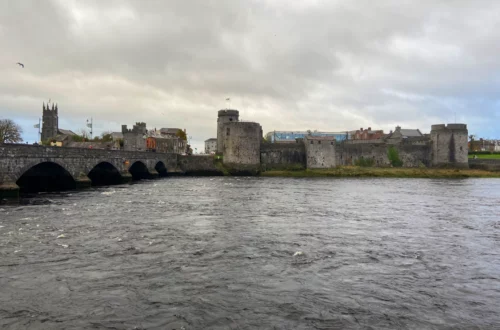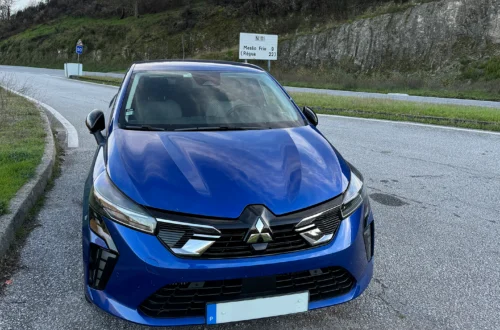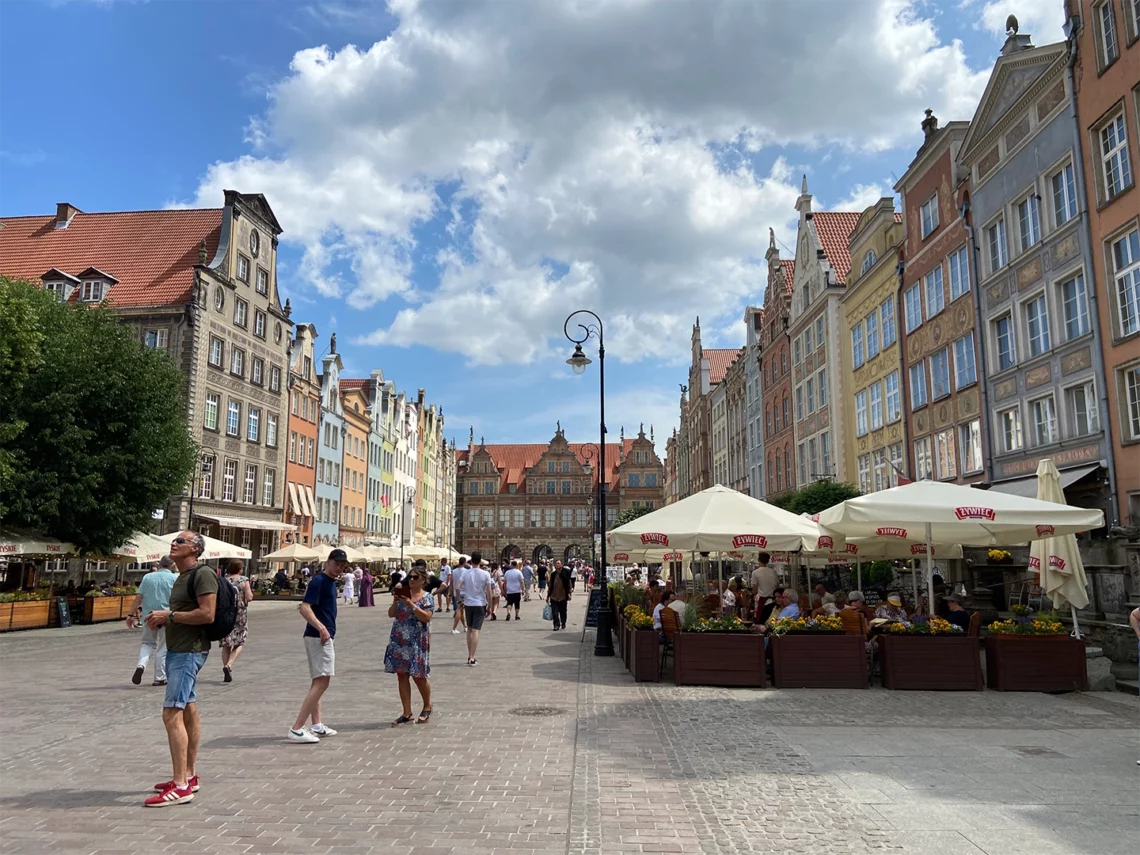
4 days in Gdańsk – Poland
Gdańsk has had a complex history, which shows in the design and cityscape of the town. During WWII the city had been mostly destroyed but has since been rebuilt in the style of its most affluential time, the 1700s. It is the capital and largest city of the Pomeranian Voivodeship in Poland and it’s part of a Tricity area with the towns Gdynia and Sopot. This year during my Poland trip I spent 4 days in Gdańsk at the start of June.
The best time to travel to Gdańsk, in my opinion, is just outside of the summer travel season, so either June or September. That means the weather is nice, most things are open and there aren’t too many people. In this blog post, I have compiled a detailed itinerary for 3 nights and 4 days in Gdańsk.
This post contains affiliate links to things like tours and hotels. These help me earn a small commission at no additional charge to you. Every affiliate link is marked with a *.
Overview for 4 days in Gdańsk
- Where to stay in Gdańsk
- Where and what to eat and drink in Gdańsk
- What to do in Gdańsk
- Free things to do in Gdańsk
- I don’t want to read, just show me a map for 4 days in Gdańsk
Where to stay in Gdańsk for 4 days / 3 nights
The city centre of Gdańsk is walkable, so if you stay close you can save on public transport. I stayed in an apartment block on Stolarska Street*, across from the Basilica of St. Bridget. I’d say that location is ideal if you don’t mind loud church bells ringing every waking hour of every day (in fairness, they don’t ring between 10 pm and 7 am). You can reach the inner city in minutes, I didn’t buy a public transport ticket at all. The apartment is also really good value for money.
Where to eat and drink during 4 days in Gdańsk
Pomelo Bistro Bar
To experience and enjoy Polish cuisine with a modern twist, breakfast and cocktails you should go to Pomelo Bistro Bar in Gdańsk.
Two current menu favourites are “Goose on Challah” and “Kartacz”.
Challah is an egg-yeast-rich bread of Jewish / Eastern European origin, quite similar to brioche. The bread is topped with blackberry jam, goose liver, different types of onion and pickles and greens. Now, if you’re not much of a liver fan, worry not: Goose liver (not foie gras!) still has that tangy innards taste, but less strong than beef liver and it balances nicely with the sweet-ish bread, jam and pickles.
Kartacz are meat-filled, traditional Polish potato dumplings. At Pomelo they’re filled with stewed beef cheek and served in roasted vegetable broth, with crunchy onions and radish salad. The beef cheek is so soft you’ll only need the spoon to eat the entire dish!

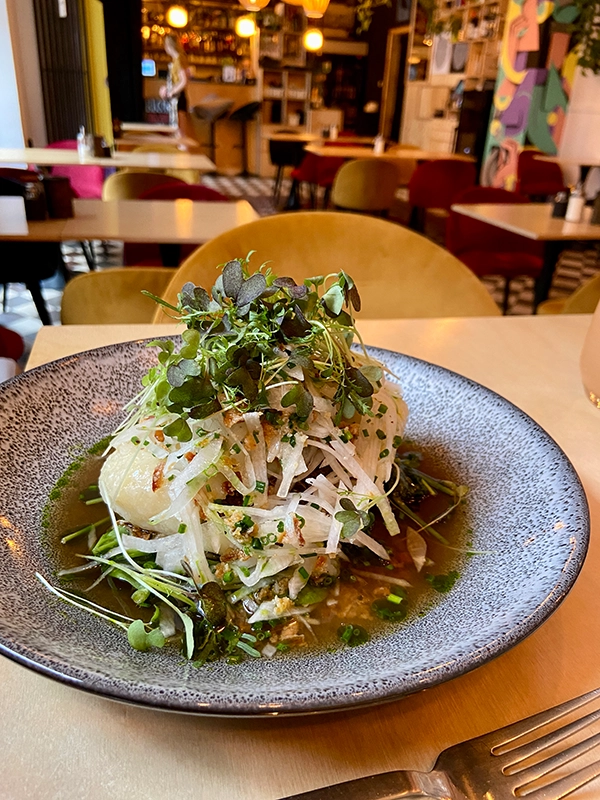

Ducha66
Ducha66 was a tip from Paulina to visit for breakfast; it turned out to be the best breakfast on the trip!
They serve Polish-European fusion dishes with locally sourced ingredients and Polish wines.
I recommend two dishes:
- A sweet dish with sweet yeast-based bread, topped with hazelnut cream and fresh fruits.
- A savoury dish which was like a breakfast sandwich but on a burger bun.
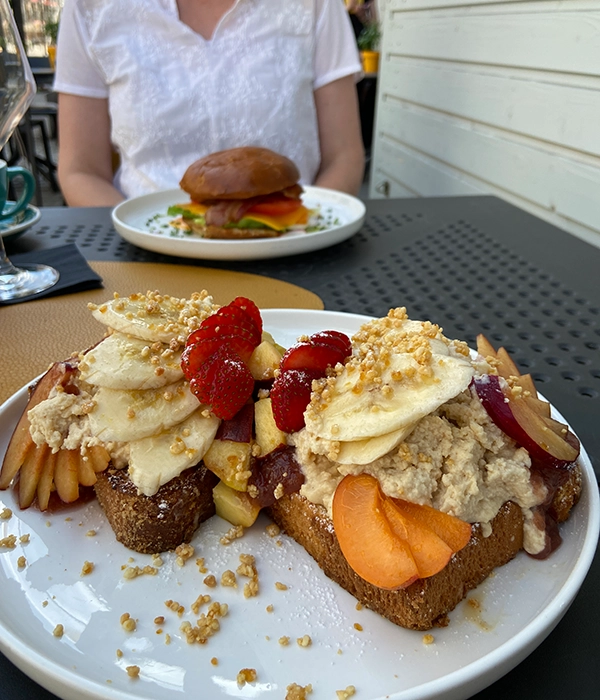
W4 Food Squat
Street art, sculptures, street food, food trucks, bars, reclaimed factory buildings and the European Solidarity Centre: The area of the former shipyard of Gdańsk has a lot to offer. The area north of the junction of the Motława and the Martwa Wisła branch of the Vistula River is part of a redevelopment project in Gdańsk.
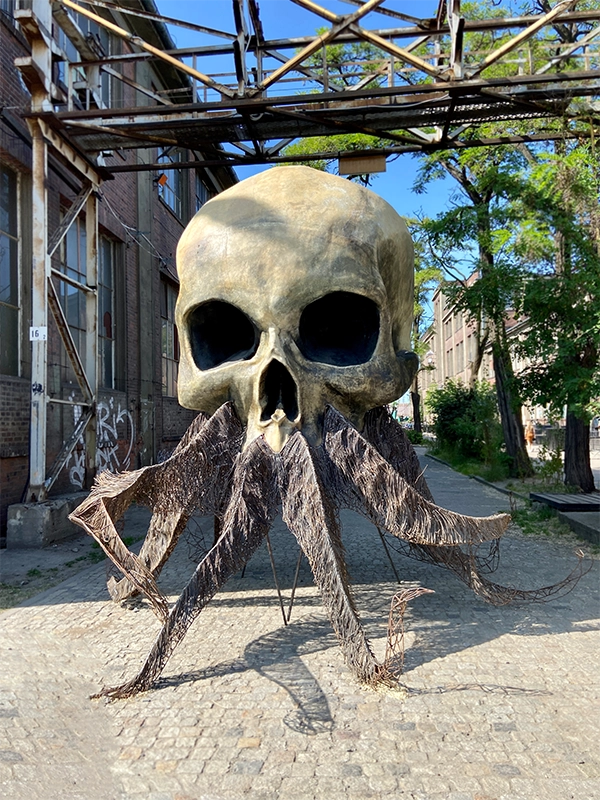
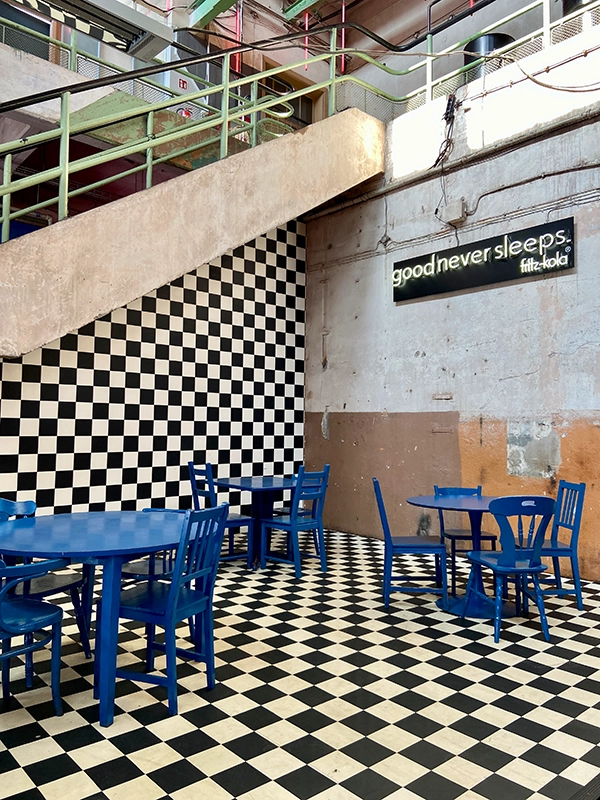

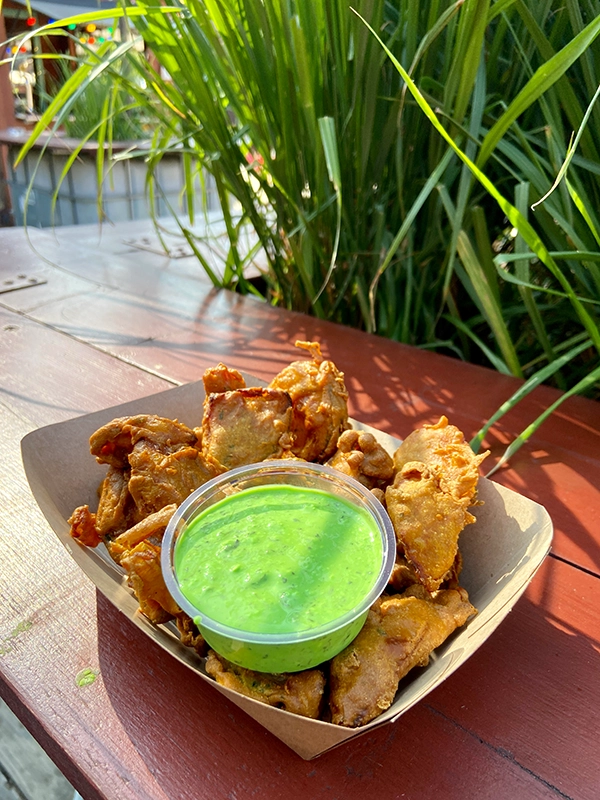
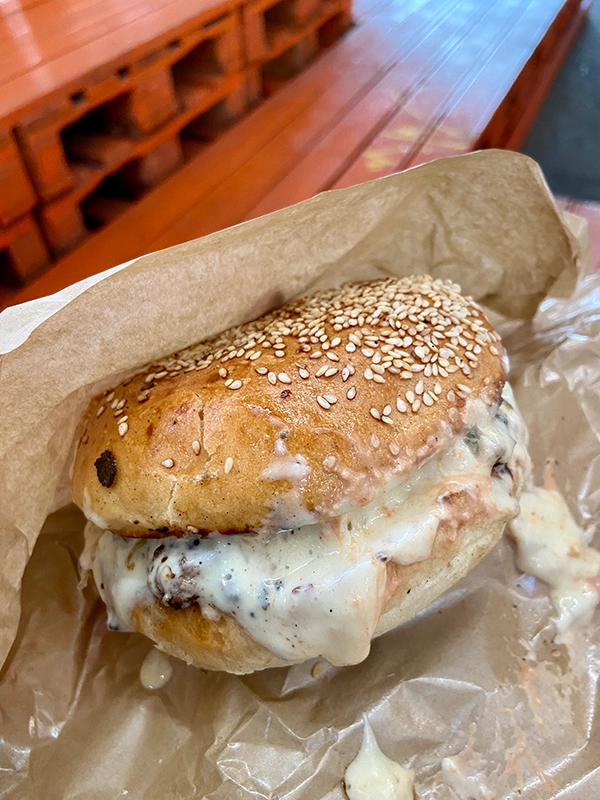
At W4 Food Squat in the former shipyard, you can find several food courts with food trucks, bars operating out of old caravans and food stalls build into old shipping containers. As pictured above I had a smash burger at a food truck called Carmink as well as a portion of vegetable pakora from a shipping container food stall called Bombay. Delicious!
Pierogarnia Stary Młyn
While in Poland, you should try Poland’s national dish: Pierogi.
Traditionally Pierogi are made from unleavened dough, wrapped around a savoury or sweet filling and cooked in boiling water. Before visiting Poland I had no idea that pierogies aren’t always boiled, but sometimes also oven baked.
You can try different kinds of Pierogi at Pierogarnia Stary Młyn, both baked and more traditionally boiled. They have an offer of a mix plate for ~10€ where you can try three Pierogi in one meal. That is what I went for and tried the baked ones. I detailed the ingredients below. My favourite was the vegetarian one!

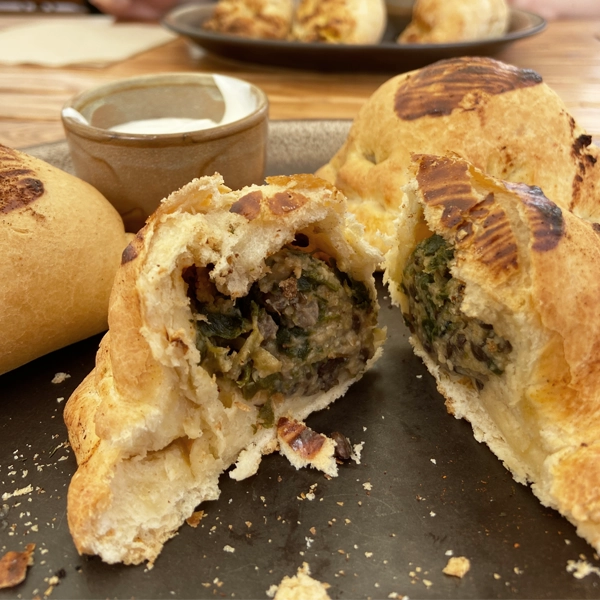
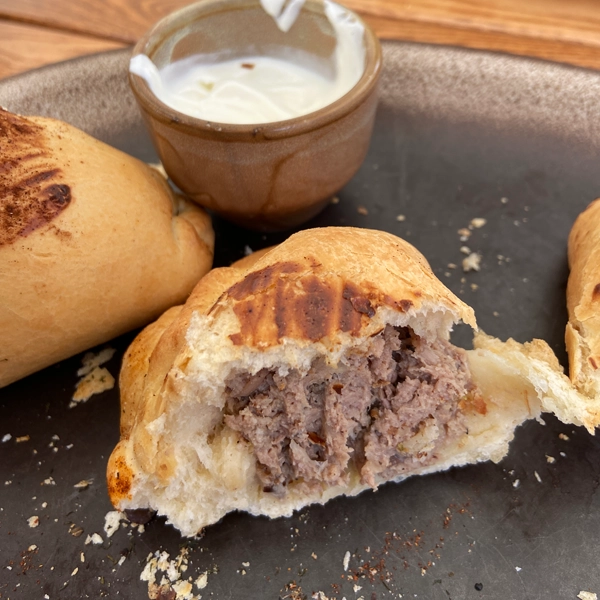
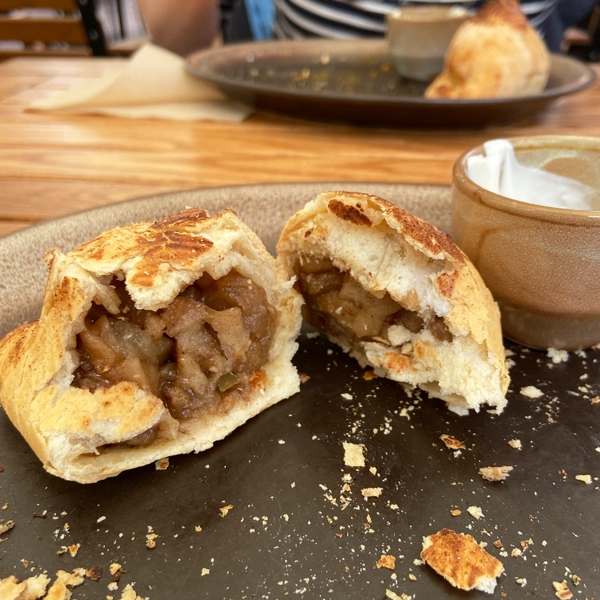
Bar Leon
Bar Leon serves modern Middle Eastern cuisine and cocktails. They’re situated on Wyspa Spichrzów (Granary island) across from Gdańsk old town and next to Ołowianka island. It’s the perfect dinner spot after a visit to the National Maritime Museum! My favourites on the menu were Baba Ghanoush and Feta in Kadayif pastry, a very thin pastry that reminded me more of fried noodles than dough.
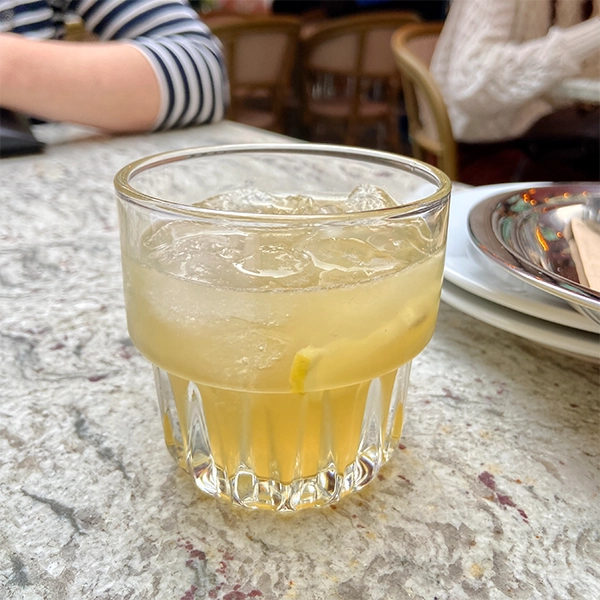
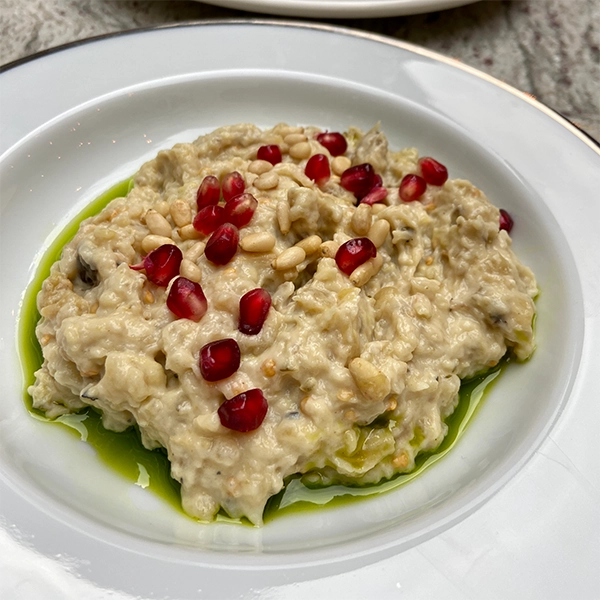
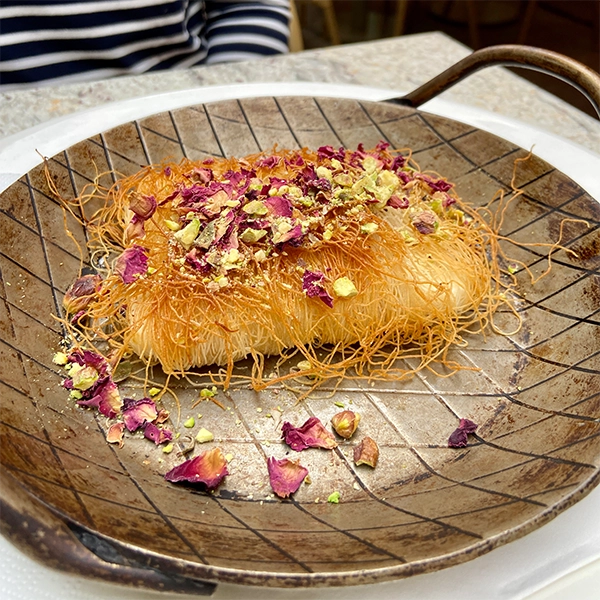
Leń
Everywhere I go I have to find good coffee. Is that a sign of addiction? Possibly. But for now, I’m okay with that.
In Gdańsk, I found Leń, who made the best coffee in the city. Period.
And no, I was neither sponsored nor did I get anything for free, I just really liked their coffee. 💁🏼

Winston Bar
Like many countries in Europe, the drinking culture in Poland is well established. Polish people are known for consuming more strong liquor, namely vodka and less wine, like the French or beer, like the Germans. During my time in Poland, I went to several bars and Winston Bar was one of my favourites. It is located in the old town of Gdańsk and when you sit outside you can enjoy the views of the old town during sunset while sipping on delicious drinks.

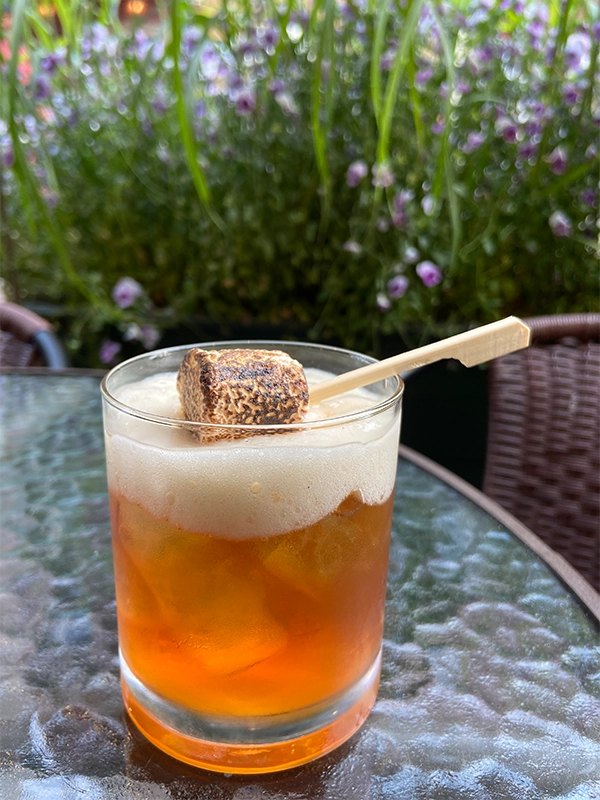
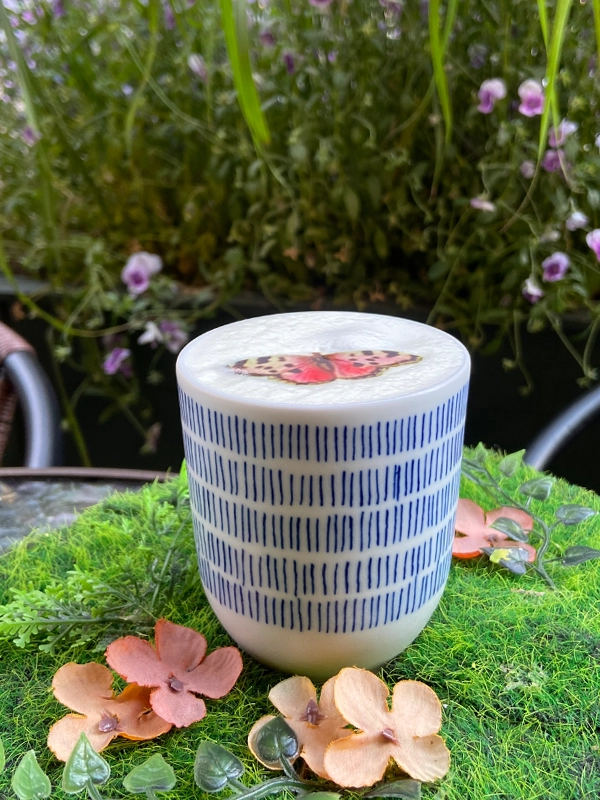
The menu at Winston Bar changes seasonally. For summer 2023 they had a menu based on AI-generated art, accompanied by a social commentary on the same subject on the front page. I could go off on a tangent here, but I’ll reserve that for another day.
I tried two of these drinks, pictured second and third: Pop-Nut and Secret Garden.
White Russian with vodka, coffee liqueur and heavy cream. It’s a classic, it was well made and loved the chocolate sprinkles on top.
Pop-Nut with wild turkey bourbon, peanut butter, banana, banana beer and a marshmallow. Very interesting combo, the singed marshmallow on top lets it stand out, but too much banana for me. If you like bananas and bourbon, you will like this drink.
Secret Garden is made with vodka, Midori (a Japanese melon liqueur), choya, green tea and lemongrass. It was refreshing (as much as you can say that about an alcoholic drink) and so sweet you don’t really taste the alcohol.
What to do for 4 days in Gdańsk
During your time in Gdańsk, there are many cultural things you can do and see. I have compiled my must-see things here which you can manage without stress in 4 days.
Amber Museum
Amber has fascinated and intrigued humans since the Stone Age. The Amber Museum of Gdańsk captures this fascination on two floors of exhibitions, from the history of Amber to its discovery, scientific facts, uses over millennia, to jewellery and art.
“Geheimnisvoll am lichten Tag
– Johann Wolfgang von Goethe
Lässt sich Natur des Schleiers nicht berauben,
Und was sie deinem Geist nicht offenbaren mag,
Das zwingst du ihr nicht ab mit Hebel noch mit Schrauben.”
This poem by the German poet Goethe is written on the title of the first edition book “Die Insekten im Bernstein” (insects in Amber) from 1830, which is on display at the amber museum in Gdańsk, near an exhibition of rare amber inclusions. Gdańsk, or Danzig as it was called back then, was German when this was published. The museum has several inclusions on display, from plants to insects and even a small lizard.
For me, it perfectly captures the wonders of nature through human eyes.
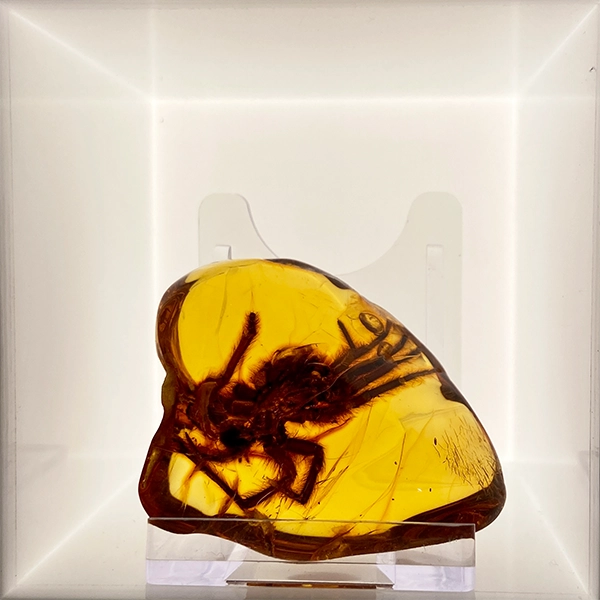
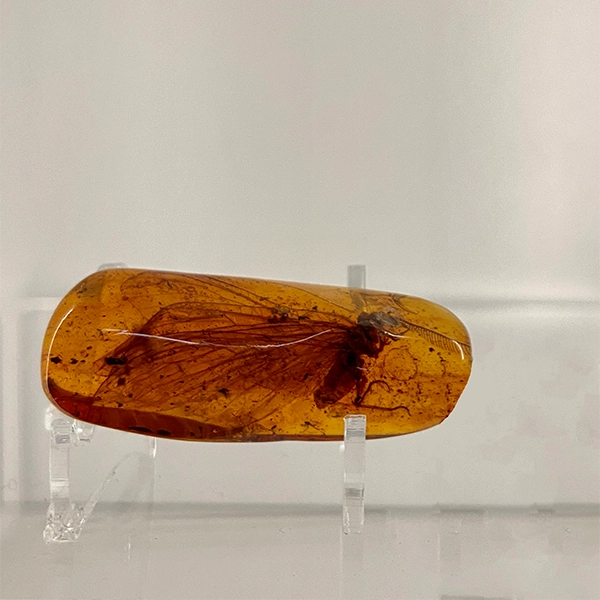
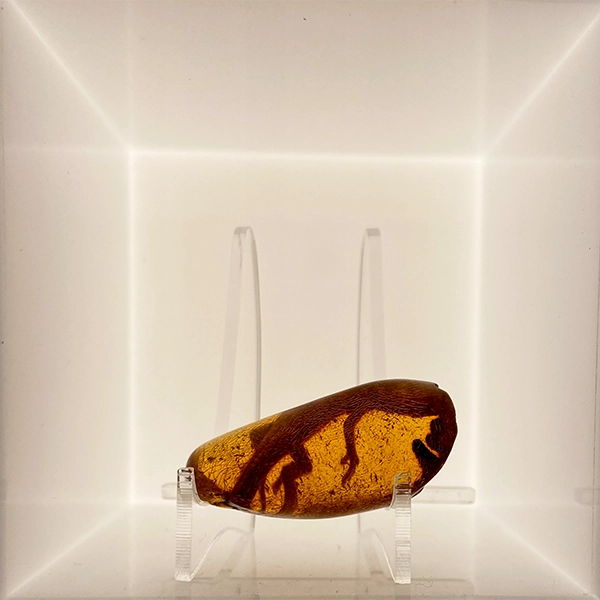
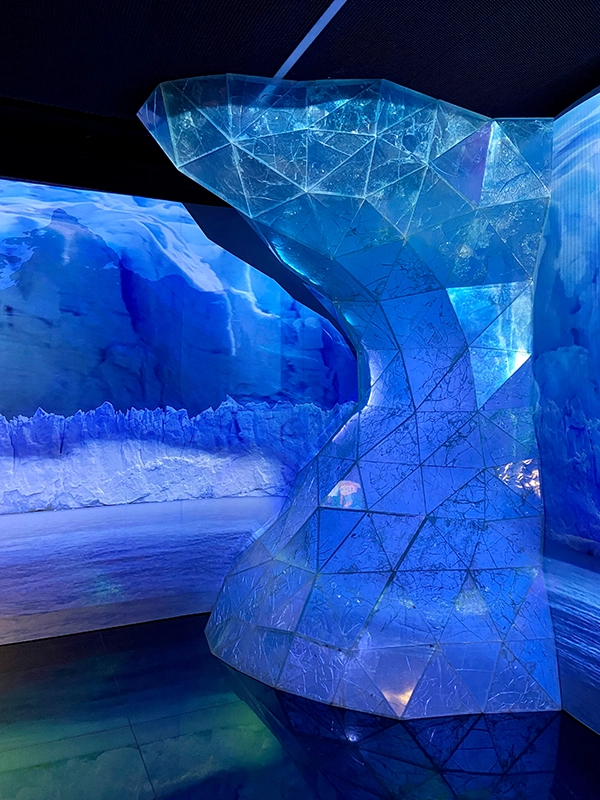
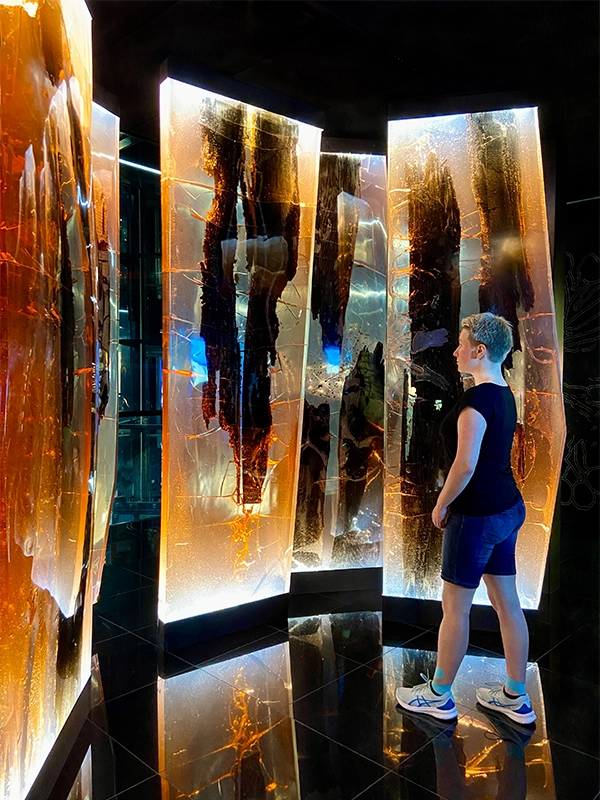
I love visiting museums when I travel and the amber museum was my favourite in Gdańsk!
Main Town Hall and Gdańsk Museum
While the Main Town Hall of Gdańsk is still in operation as a government building it also houses the History Museum of the City of Gdańsk.
Gdańsk has a complex history. During its existence as a recognized city, it has been Polish, German and under self-rule. In the middle ages, Gdańsk established itself as an important port, not only for trade but also for shipbuilding. In the middle 1300s, it joined the Hanse, a league of free German cities trading and helping each other with safety measures against pirates.
On the first of September 1939, it became the starting point of the Second World War. During the war, the city was severely damaged. Only in the 1950s and 1960s they managed to rebuild. After the war, the city became part of the Polish People’s Republic (Polska Rzeczpospolita Ludowa, PRL), which was considered a satellite state in the Soviet sphere of influence, although it wasn’t officially part of the Soviet Union.
In 1980, Gdańsk was the birthplace of the Solidarity movement (Solidarność), which ultimately was one of the forces that lead to the collapse of the Eastern Bloc, the fall of the Soviet Union and the establishment of the Republic of Poland as we know it today.
The museum gives an interesting overview of the city’s history and development over the years. However the main attraction of this building is the ceiling in the old city hall, and for good reason:

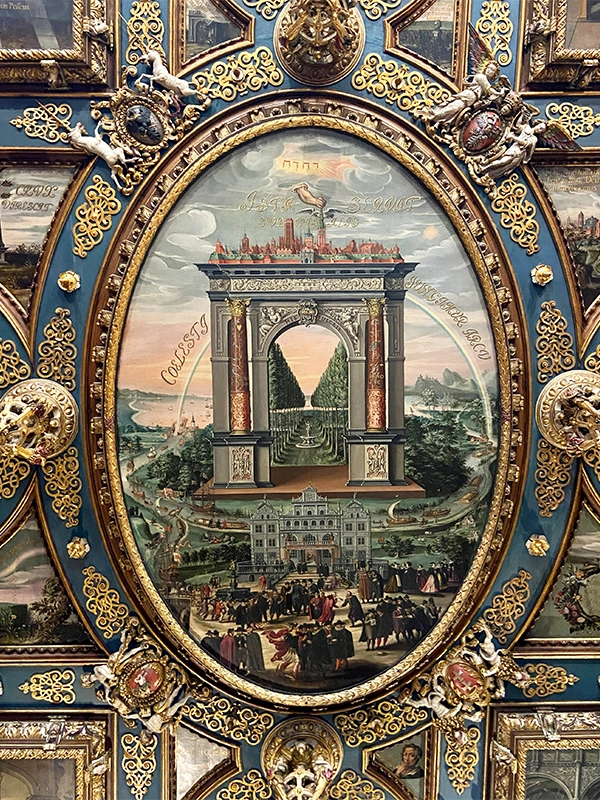
From the clock tower of the city hall building you also have a great view over the city. Sadly, the tower was closed due to the weather conditions when I went there, maybe you’ll have more luck.
National Maritime Museum
The main exhibition of the National Maritime Museum is located in three historic granaries, which are located on Ołowianka island, only one bridge away from the old town centre.
Within the exhibition, you can find archaeological findings and historic artefacts, models of ships and submarines and even actual underwater robots and submersibles.
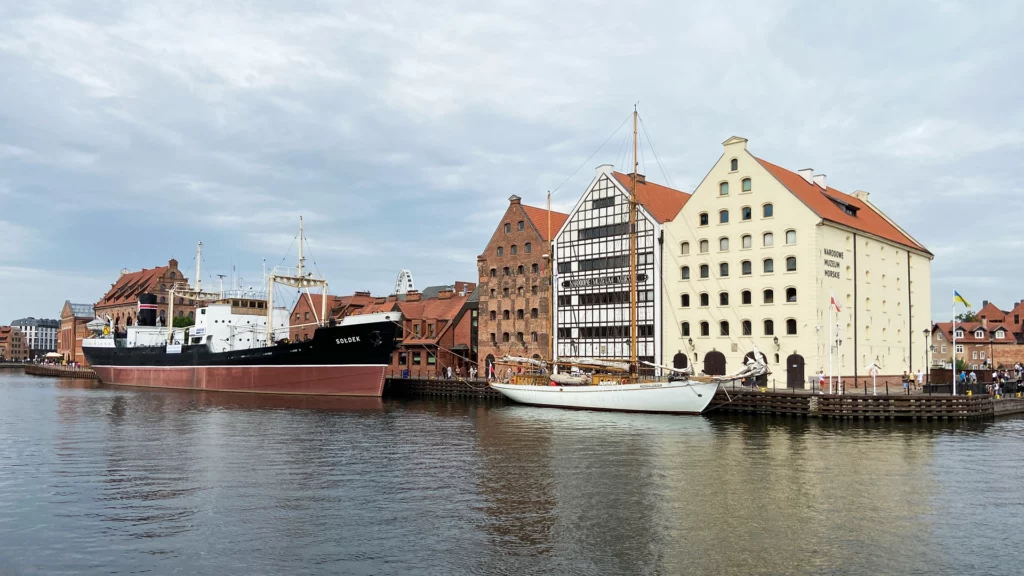
The ship you can see here, Sołdek, is also an exhibit you can visit. And although it is not accessible by wheelchair they have made it accessible with a “Sołdek box” inside the main museum. You can wheel into the box, wear virtual reality glasses and explore the ship that way!
Basilica of St. Bridget with the amber altar
Inside St. Bridget’s church (Brigittenkirche), you can find the amber altar. This 11-meter-high piece of religious artwork was made from thousands of pieces of amber.
The middle figure is a Polish patroness, the Holy Mother from Czestochowa, covered in amber. She is surrounded by golden-amber crowns and 28 rubies (symbolism for 28 shipyard workers, killed during a strike) with her dress and the eagle above her made with white amber.
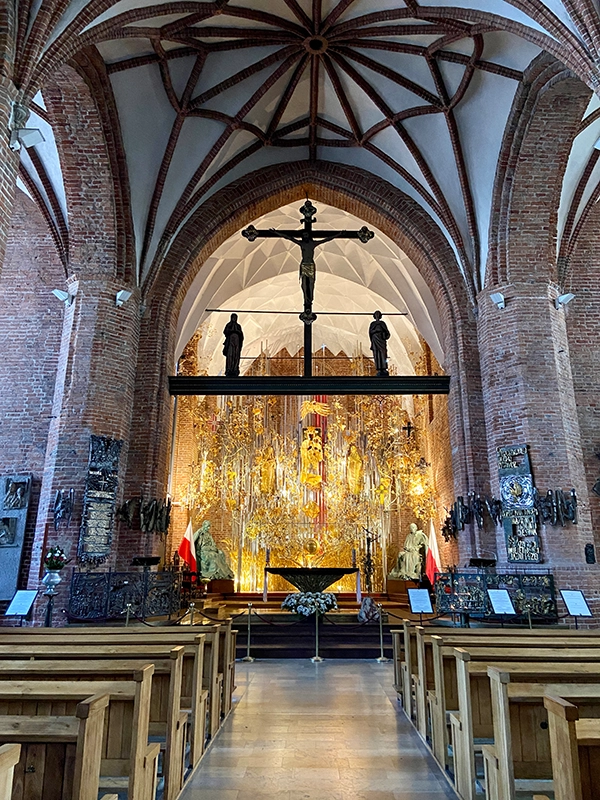
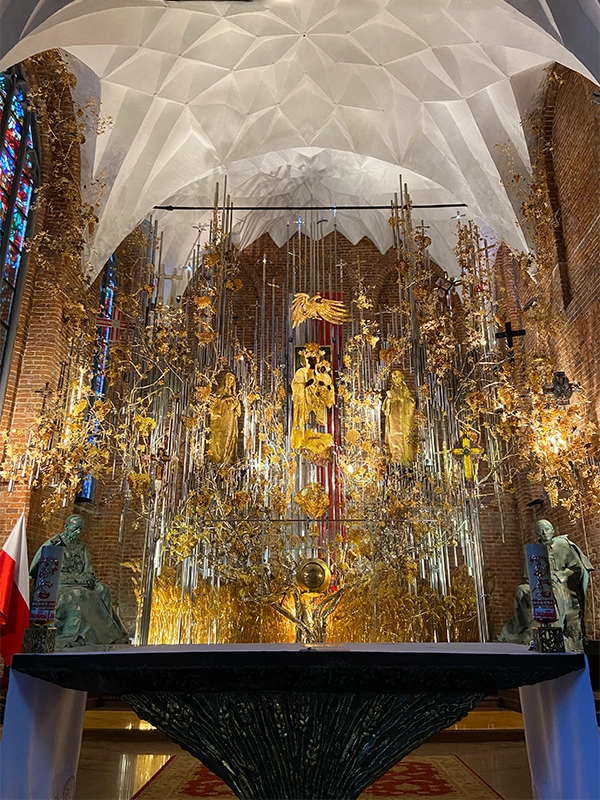
The bronze figures in the back represent Saint Brigitte herself and Blessed Elizabeth Hesselblad, Reformer of the Order of Brigitte. In front of the altar are two life-size figures of Primas Stefan Wyszynski and the Polish Pope John Paul II.
Why was a church altar built to include people who died during a political movement? Because during the Solidarność movement, this was the meeting place and centre of action for the trade union. Its leader said that without the parish priest, the revolution wouldn’t have been possible.
Ice Cream City Tour

Have you ever been on a city tour based around ice cream? Get the Scoop 🍨 and explore ice cream and history in Gdańsk.
Natasa is a very enthusiastic guide who combined her love for ice cream with journalistic insight into the city history of Gdańsk and all it has to do with ice cream.
You’ll meet in the heart of the old town where the tour starts. During the tour, you’ll have a scoop of ice cream of your choice at three different shops. Sometimes you can even try two flavours in one scoop!
This tour is the perfect choice for a hot summer day, but honestly, any weather is the perfect weather for ice cream!
Half-day trip to Sopot
While spending 4 days in Gdańsk you have just enough time to fit in a half-day trip to Sopot. Sopot is mainly a beach and tourist town, so expect that when you visit and just enjoy the beach around the Pier in Sopot, a good meal near the beach at Spoko Restaurant & Pub, a walk through the city and an on-site made ice cream at Kulki Anulki.
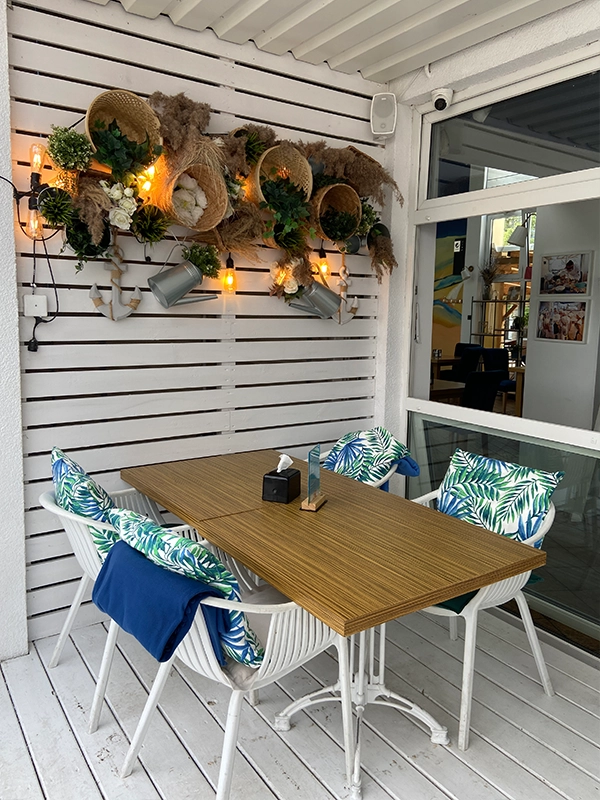


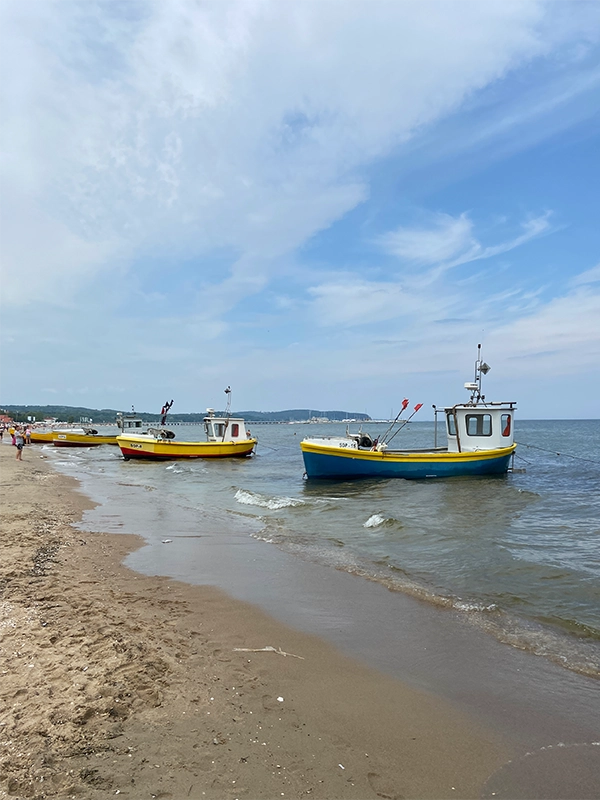
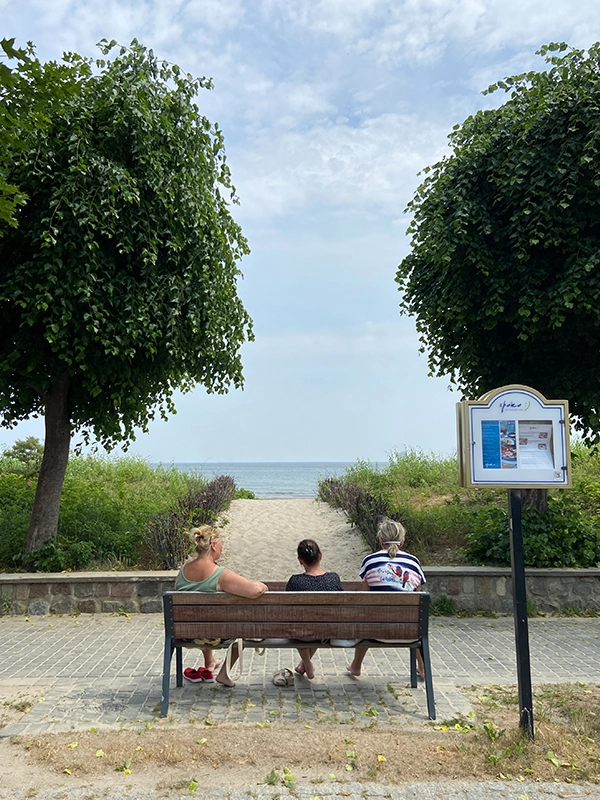
Free things to do for 4 days in Gdańsk
When you spend 4 days in Gdańsk it’s a good idea to do free things to help your budget. And fittingly there are many things to do and see for free in Gdańsk:
Near the Polish Post Office Museum, which in itself is a historic sight you can find the Defenders of the Polish Post Office statue, a depiction of the Greek goddess Nike who ascends on clouds towards victory with a dying Polish soldier handing her his rifle. Around the corner, a remembrance wall has been installed where the defenders of the Post Office were lined up to be shot by the German forces. Their handprints can be seen on the wall as well as the ones of a little girl who was in the Post Office at the time of the attack. People leave toys and stuffed animals for her here.
“Rozbitkowie / shipwrecked” are robot statues by Czeslaw Podlesny. These robots were built from scrap found around the abandoned shipyard of Gdańsk and now emerge from the watery depths of the river to walk on land.
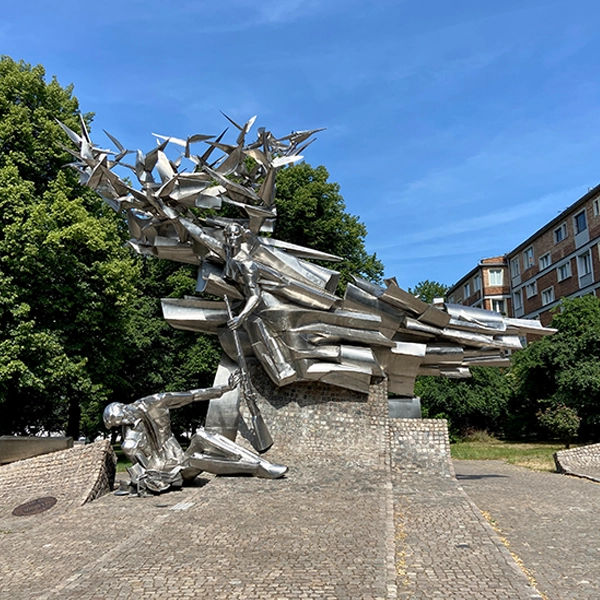

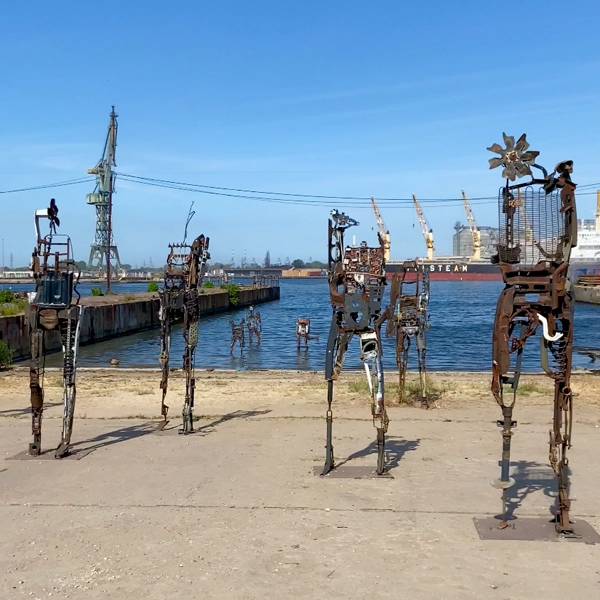
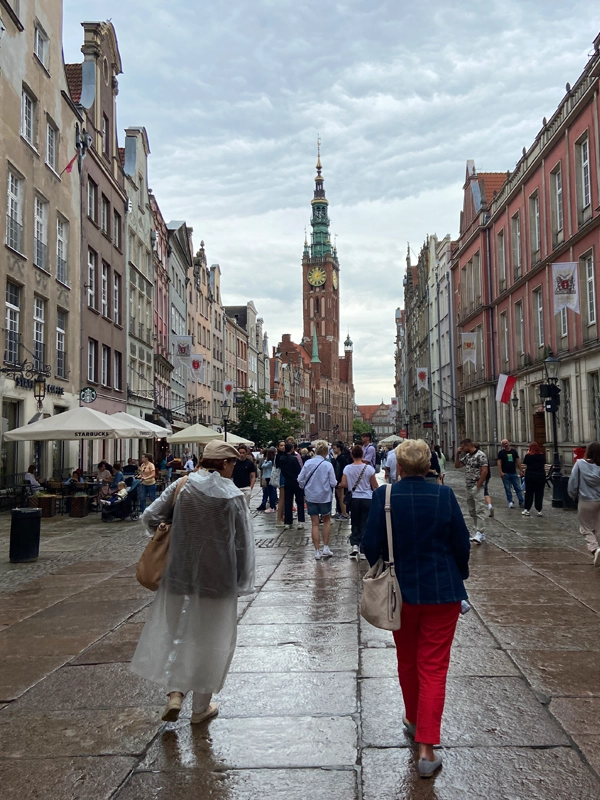
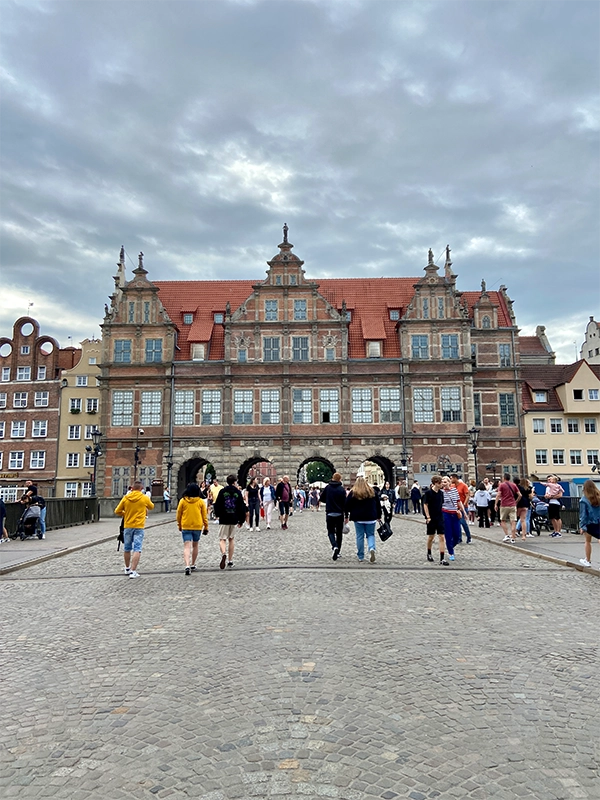


Historical Zone Free City Of Gdańsk – The centre of the old town with many beautiful old (well, old looking, rebuilt) houses, gates and churches, like the Green Gate (Brama Zielona). It was originally built as a palace for Polish monarchs, but no Polish king ever stayed in the building. 🤷🏼
Gdańsk Neon Sign – exactly what it says on the tin. It’s a huge metal and neon sign with the letters G-D-A-N-S-K right in front of the Polish Baltic Frédéric Chopin Philharmonic.
Mariacka – also known by its German name “Frauengasse”, is a cobblestone street in the old town of Gdańsk, lined with colourful and richly decorated townhouses, which give a great impression of Gdańsk at the height of its wealth. Today the street is closed to traffic and there are many street vendors and stores selling jewellery and crafts made from amber.
Discover Manhole Covers – Yes, really. Gdańsk has a few interesting manhole covers. Some are adorned with the city’s coat of arms, others show sights from around the city like Neptune’s Fountain.
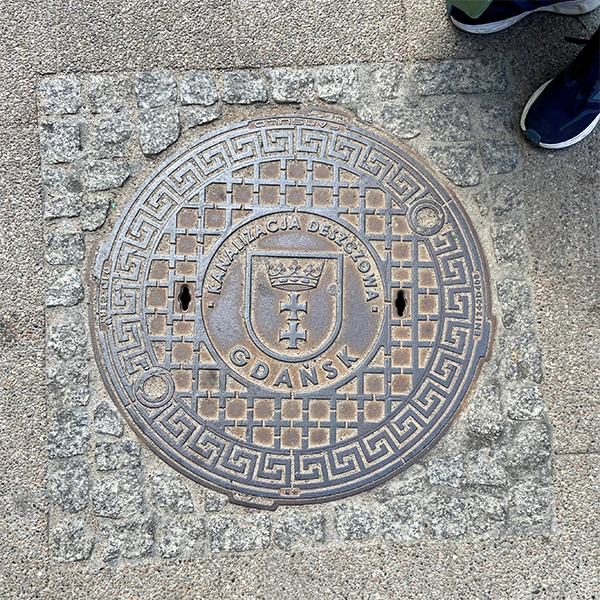

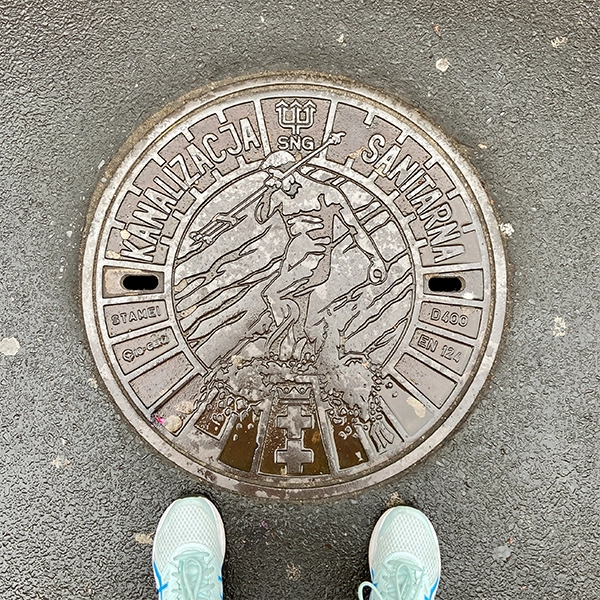
Layup – UrbanArt Gallery is a street art gallery located in the former shipyard of Gdańsk. They present graffiti art inside an abandoned factory.
Basilica of St. Mary of the Assumption of the Blessed Virgin Mary in Gdańsk. Inside the Basilica of St. Mary, you can find the astronomical clock of Gdańsk, a very impressive gold and blue clad organ and from the Basilicas Tower, which you can climb for free, you have a great view over the city.
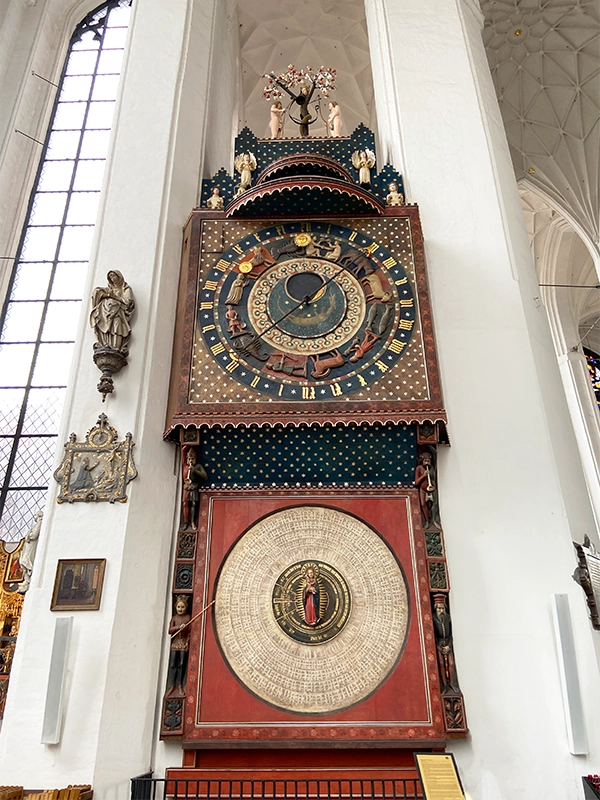
Free entry to Museums
Some Museums in Gdańsk also offer free entry, but only on specific days of the week, so your visiting dates can seriously affect your budget. You can get free entry to these museums on the following days:
Monday (May-September)
- Main Town Hall and Gdańsk Museum
- Polish Post Office Museum
- Uphagen’s House
- Amber Museum
Tuesday (October – April)
- Main Town Hall and Gdańsk Museum
- Polish Post Office Museum
- Uphagen’s House
- Amber Museum
Wednesday
- National Maritime Museum (granaries on Ołowianka island and for the crane)
Friday
- National Museum in Gdańsk
- Abbot Palace (Museum of Modern Art)
- Ethnography Museum
Map for 4 days in Gdańsk
How to read the map for 4 days in Gdańsk: the blue are spots to visit I mentioned above, the orange are the restaurants, bars and cafes and the green spots are free things to do and see. You can open the menu on the top left and choose the layers of the map.
You are currently viewing a placeholder content from Google Maps. To access the actual content, click the button below. Please note that doing so will share data with third-party providers.
More InformationYou can save the map by clicking here.
In the mood for more Poland?
Still have time on your vacation? Consider renting a car to visit more cities in Poland! Sure, there are train connections between the big cities, too, but if you want have the option to be fully mobile and stop at every sight of the way a car is still the way to go AND you can filter for electric cars by picking the filter “zero emissions”.
Need recommendations on where to go? Check out my blog posts about Szczecin and Warsaw.


